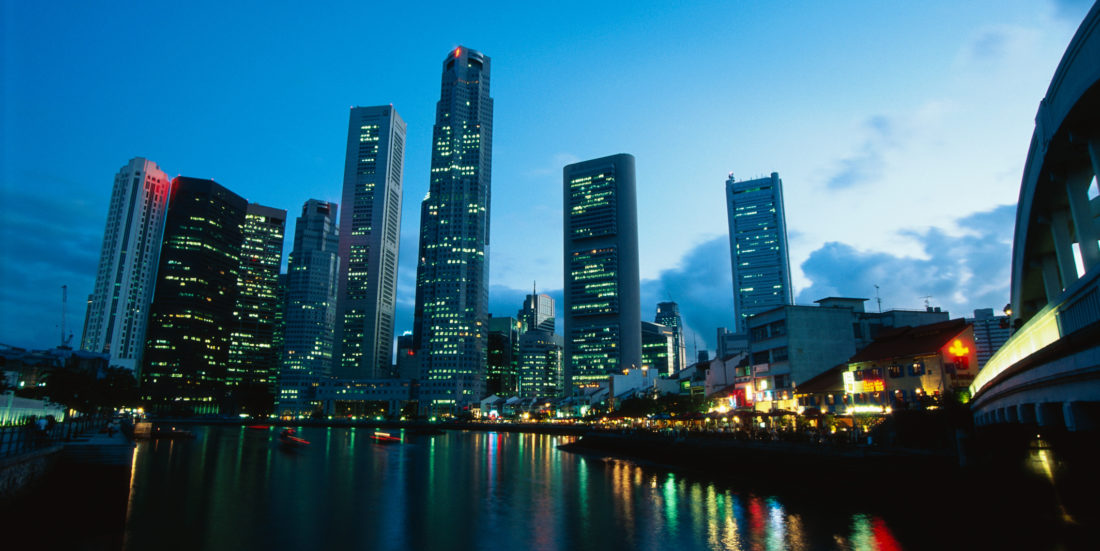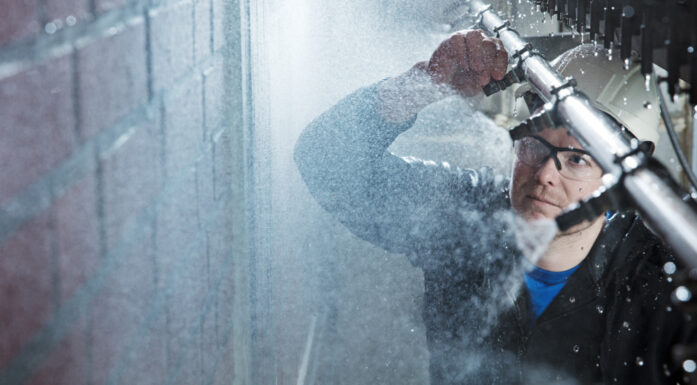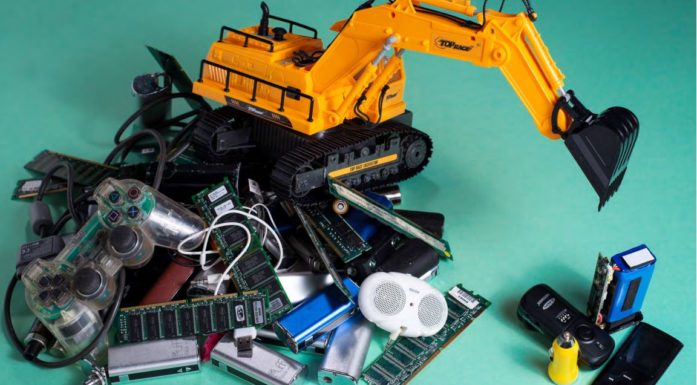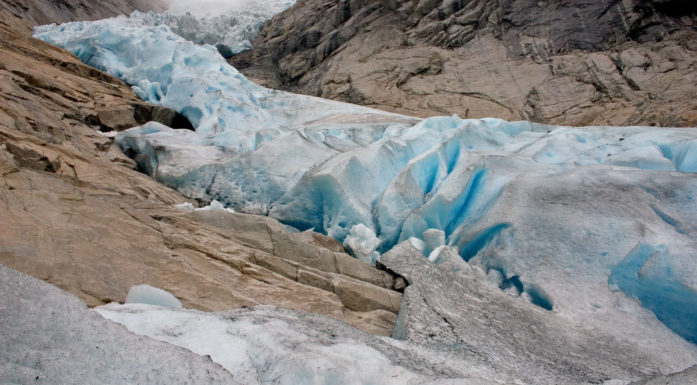Urban mines of tomorrow
Today’s cities are the urban mines of tomorrow.
Daniel Beat Müller and Gang Liu don’t look at an urban landscape the way an average person does.
Instead of seeing skyscrapers and roads, streetlights and drainpipes, they see metal – lots of metal.
Müller is a professor and Liu a postdoc in the Norwegian University of Science and Technology’s (NTNU) Industrial Ecology Programme. Their unconventional view of the world has an important goal. The Intergovernmental Panel on Climate Change (IPCC) has warned that to avoid a temperature increase beyond 2° C, society must cut global greenhouse gas emissions by 50-85% below 2000 levels by 2050 to avoid catastrophic climate impacts – a scant 35 years away. By looking at how humans produce, use and recycle metals, Müller and Liu hope to be able to identify places where metals cycles can be streamlined to use less resources and energy and to help the metals industry reach its emissions goal.
While Müller has looked at a range of metals in his career and in his role as a lead author for the upcoming 5th Assessment Report of the IPCC, Working Group III on climate change mitigation, he and Liu have most recently focused on aluminium.
Aggressive recycling needed
This lightweight and versatile metal makes an important contribution to the Norwegian economy – but it is also one of the most energy-intensive metals on the planet to produce.
By some estimates, aluminium production consumes 3.5 per cent of global electricity and on its own is responsible for 1 per cent of CO2 emissions.
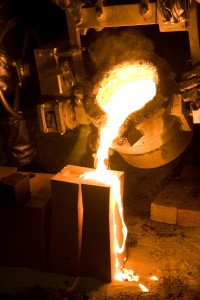
Aluminium production is an important part of the Norwegian economy, but it is also one of the most energy-demanding metals to produce. Photo: photos.com
The pair has produced a deep analysis of aluminium production and material flows in a series of papers published over the last several years as a part of Liu’s PhD research. Their findings show that a 50 per cent emissions reduction for the industry can only happen with aggressive recycling, adoption of new technology and low worldwide per capita aluminium consumption – with levels more like Portugal and Spain than the US and Norway.
Without adopting these measures soon, the aluminium industry will find it “very difficult to achieve” the kinds of emissions cuts necessary to avoid dangerous global warming, Müller says. Especially when it comes to investing in expensive but efficient new production technologies, industry has to act now before the window of opportunity closes and it is too late.
Aluminium everywhere
Aluminium is a material that is growing in importance in both developed and developing societies. It’s found in everything from window frames to computer cases to aircraft skins and automobile engine blocks.
Since 1950, aluminium production and use has grown by a factor of 30 – the greatest growth over the shortest period for any common metal. It is the second most used metal worldwide, after steel. More aluminium is produced than all other non-ferrous metals, or metals containing iron, put together. (The use of rare earth metals has also grown precipitously over this period but pales in comparison to aluminium in terms of sheer volume of material produced).
And by the IPCC target date of 2050, aluminium consumption is projected to triple yet again. That skyrocketing growth puts additional pressure on the industry to find every way possible to cut its greenhouse gas emissions. It won’t be easy for any industry to make these cuts, but Müller says it is particularly important for aluminium to look at the big picture to solve this problem.
“It’s often the case that people focus on individual parts where the manifestations of the problems are found,” he says. “What we are trying to do is to see the connections between the different parts. Often when you think you can do something where the problem actually occurs, it may be more effective to do something (to fix the problem) in a different place.”
Urban mines and stocks
One critical concept in understanding how producing a metal like aluminium can be made more efficient is to look at what are called “material flows”.
Simply stated, material flows describe the movement of a substance from its unprocessed, raw state through refining, processing, use and ultimate recycling and disposal.
Knowing “how the material flows between different processes and how it accumulates in society, that has a big influence on environmental consequences, climate change, recycling and energy use,” Liu says.
A part of this idea is the concept of “in-use stocks”, or the materials that are incorporated into products that are currently being used – from the aluminium in the airframe of a jet to the aluminium engine block in your car. Of all of the aluminium that has ever been mined or processed, 75 per cent is currently still in use.
These “in-use stocks” are important because they represent an important source of materials that can be recycled in the future. As long as these aluminium products are being used, they are not available for recycling, and additional products thus need to be produced from bauxite, the most important aluminium ore.
At some time in the future, however, perhaps sooner rather than later, these stocks will become available for recycling. You might think this is good news, because most of the energy consumption involved with aluminium production is in the first steps, where bauxite is mined and then turned into “primary” aluminium.
But it turns out that recycling used aluminium is not as easy or straightforward as you might think.
Not a single kind of metal
Most people think of aluminium as a shiny grey metal that keeps your cola cold or makes your hybrid car more energy efficient. That’s not wrong, but it ignores the fact that there is no one kind of aluminium.
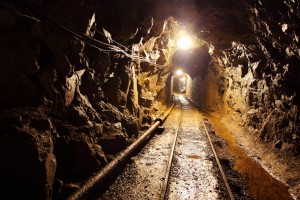
Most of the energy that is consumed by producing aluminium is used in the first sages, where bauxite is mined and turned into pure aluminium. Photo: photos.com
Instead, aluminium is almost always blended with small amounts of other metals, typically copper, magnesium, manganese, silicon and zinc, to make alloys. For example, aluminium alloy 7075, which is alloyed with zinc and magnesium and smaller amounts of copper and other metals, is commonly used in the aerospace industry.
Only certain kinds of alloys can be wrought, meaning extruded or rolled into sheets or specific shapes. Other alloys are more suited for casting, a process where hot metal is poured into forms. The sheet metal that forms an automobile body would be wrought, while the aluminium engine block would be cast.
Recycling challenge
Alloys make aluminium stronger or give it other desirable properties, but they also pose a huge challenge when it comes to recycling. While something like a beverage can can be clearly identified and separated out of the waste stream to be recycled separately, other aluminium alloys are not so easy to identify, says Amund N. Løvik, a PhD candidate who is working on the alloy question with Müller and Liu.
Inevitably, when an automobile is shredded for recycling, for example, different aluminium alloys are mixed, which means that the resulting recycled aluminium can no longer be wrought, only cast. This makes the mixed-alloy aluminium less versatile in terms of the uses to which it can be put.
And “aluminium is different from other metals, because you cannot remove alloying metals any more,” Müller says. “You can refine steel by removing other metals, but removing alloying elements from aluminium is very energy intensive, and you lose the whole advantage of recycling. In practice you can only add other metals, you can never remove them.”
Post-consumer crisis
All of these different alloys – and the challenges of recycling them – will make more and more of a difference as today’s “in-use stocks” approach the age at which they can be recycled.
Currently, the production of cast aluminium can absorb all of the post-consumer mixed alloy aluminium scrap that the world’s economies produce. But that will change, Müller, Liu and Løvik warn.
“The cast components in vehicles are currently what are absorbing most post-consumer scrap,” Løvik said. “If the current system continues, at some point the availability of scrap will be larger than the demand.”
This shift will be exacerbated by the move to smaller, lighter vehicles, with smaller, lighter engine blocks. If the post-consumer scrap from one recycled vehicle currently provides the aluminium for two of today’s cars, in just a few years it may take three cars, or four cars to use of all of this less-versatile mixed alloy aluminium.
At some point, the markets will not be able to absorb all the scrap and then the value of the scrap will drop to zero.
“I would say this is urgent,” Müller says. “The technology is not there to solve it, and it takes 10-20 years for a technology to be adopted.”
Løvik says that one good solution to the “scrap quality problem” would be to obtain a more complete sorting of alloys before recycling to enable “closed-loop” recycling.
“There are different approaches to this, such as dismantling parts of a vehicle before it is shredded, sorting by hand, or automatic sensor-based sorting systems, which are not yet fully developed,” he said. “But they all have weaknesses and limitations.”
Industry on the alert
The good news is that Müller, Liu and Løvik are already talking to the aluminium industry about these trends. Müller says there is also a larger lesson to be learned from what is happening with the aluminium industry.
“If we want to save emissions in industry, we have to look beyond industry. That is very trivial but very important because it is not something that is in the policy arena right now, it is absolutely not included,” Müller says. “If we want to save emissions in the aluminium industry, in the steel industry, the cement industry, we have to talk about the built environment and how we build our buildings and infrastructure.”
Müller says this issue is something that city planners should be addressing every time they approve an expansion of the built environment. Not only do planners, architects and construction companies need to focus on using the least amount of materials possible to provide the services that people need, they need to think about how in the future these materials can be recovered once they have lived out their useful lives.
“We need to think about how we can use cities as urban mines,” he said.
